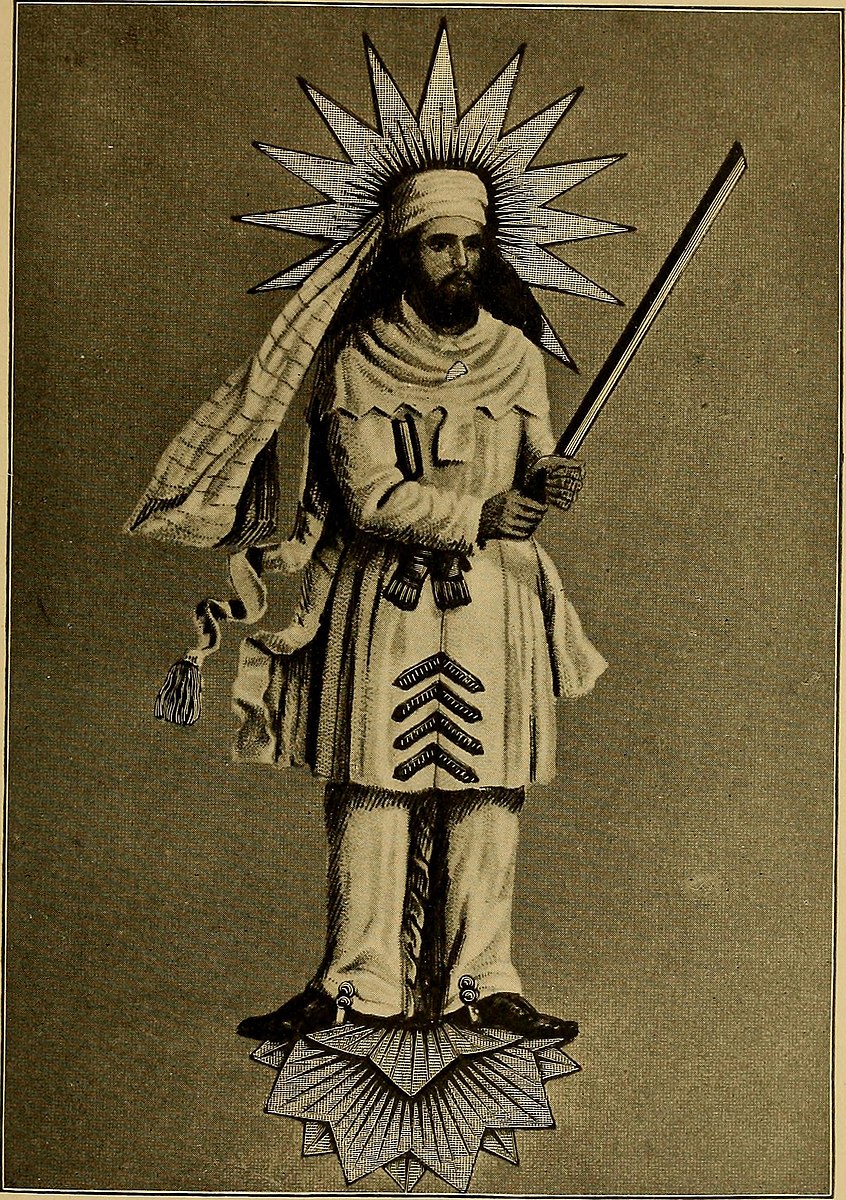Rae-Matath / Highest Intercessor
The Intercessor for All Bairhanii
Rae-Matath was the title of the head figure of the Priesthood of the One Light as well as head-of-state of the Reborn Theocracy. During the mid- and late-3400s, when the Theocracy was at the height of its power with an empire expanding across the Haifatneh Basin and suzerainty over much of coastal Takhet, the Rae-Matath was effectively the most powerful and influential (human) individual in Northwest Tahuum Itaqiin. The exact relationship of the Rae-Matath to his subjects (every appointed Rae-Matath was male) varied considerably with the Theocracy’s geopolitical status and security situation.
Each Rae-Matath ascended to the role in the context of a novel miracle, a fulfilled prophecy, or an equivalent sign of their worthiness for the role. That said, historians have also observed that the judgment of this criterion was overseen internally by senior members of the Bairhanii priesthood, and in all but the unique case of Teuantius (see the article The Rae-Matathii in History for details), each successor to the title of Rae-Matath was selected within a few months of the previous Rae-Matath’s death.
The Rae-Matathii as High Priests
The title of Rae-Matath can be translated word-for-word as “Highest Intercessor” or “Premier Intercessor” but is typically written as “Intercessor for All” or some variant in secondary texts. This title thus implied that the Rae-Matath was the only person with direct access to the One Light through prayer and ritual, though Bairhanii explanations of religious rites were contradictory in practice. Namely, lower-ranking Matathii were often popularly characterized as also being able to intercede directly with the One Light, yet official explanations claimed, more often than not, that their prayers went to the One Light by way of the Highest Intercessor. (It seems implausible that the single, human Rae-Matath was truly able to process and forward every single prayer or appeal issued by any Matath unless the Rae-Matath indeed had superhuman abilities to do so. The more widely accepted secular explanation is that all Bairhanii clergy had the ability to intercede with the One Light, with the potency of their prayers and appeals varying by their rankings.) The Rae-Matath had full authority to issue religious pronouncements and decrees, as well as decide contentious disagreements over theology. In practice, given both the scale of the Priesthood and the hierarchical distribution of clergymen’s responsibilities—not to mention the Rae-Matath’s simultaneous responsibilities as head-of-state—religious disputes were typically decided by the Tastaurii (Lawbringers), and day-to-day teachings and pastoral duties were carried out by the Matathii (Intercessors) and Gereithii (Wardens) beneath them. That said, on occasion—primarily during religious festivals, and almost exclusively in Andaen—the Rae-Matath did give sermons or speeches, during which other clergy took great pains to record or memorize the Rae-Matath’s words and incorporate them into (or reconcile them with) existing creeds and teachings. The Theocracy’s faithful subjects made a point of attending a ceremony or festival officiated by the Rae-Matath at least once during their lifetimes, seeing the Rae-Matath’s pronouncements as the closest they could get to knowing the One Light itself. Such pilgrimages were more difficult to carry out from the Theocracy’s frontiers and battlefronts, however, most of all during the Theocracy’s embattled final decades.The Rae-Matathii as Miracle-Workers
As is fitting of religious leaders who communed directly with the One Light, most of the Rae-Matathii have at least one unprecedented miraculous work attributed to them. A few, including Haurfatin and Faradinus the Campaigner, are known to have performed numerous works which blurred the apparent boundary between an “ordinary” invocation and a miracle; Faradinus in particular was famous for having turned the tides of multiple battles by pronouncing holy judgment upon his foes. That the Rae-Matathii did not perform history-changing miracles at a whim was not surprising to the Bairhanii faithful but is a compelling question in the study of the Theocracy’s history. The apparent limits on the works of the Rae-Matathii have been conventionally explained in terms of the self-discipline and self-sacrifice involved in invoking great movements of divine power. Frulthudii lore supports this notion through accounts including the failing health of Faradinus the Campaigner in his final years and the alleged deaths of lesser Bairhanii clergymen during exceptionally strenuous acts of faith and invocation. Nonetheless, critical scholars of magic, religion, and history have been inclined to wonder whether the power of the One Light itself was limited in scope. This question is likely to remain unanswered, however, given the collapse of Bairhanii as an institution and the marginalization of its dwindling number of remaining believers.The Rae-Matathii as Heads-of-State
When the Rae-Matath was not officiating religious ceremonies, he was usually presiding over matters of state, primarily in an executive role but occasionally through unilateral lawmaking or, rarely, settling historic disputes in which even two or more Tastaurii could not arrive at an agreement. These roles were not necessarily separate from the religious functions of the Rae-Matathii, as the laws they pronounced were normally grounded in their interpretations of precedents from the Bairhanii religious tradition. The Rae-Matath headed what was officially a unitary government, but the Theocracy’s vast land holdings and only moderate infrastructure meant that in practice, those settlements farther removed from the Theocracy’s citadels had plentiful leeway in implementing the religious and political directives issued by the Rae-Matath. As the Theocracy was fundamentally a militaristic, expansionistic political project, this meant the Rae-Matath was effectively commander-in-chief, too. Of course, all but two of the Rae-Matathii relied heavily upon veteran military officers in their decision-making processes, mainly approving these officers’ recommendations in lieu of developing their own strategies and campaign plans. The Rae-Matath’s primary exercise of authority as a military leader involved ordering that campaigns be launched and declaring or lifting states of emergency, for these declarations would steer the development of imperial project and the redistribution of resources across the Theocracy.1 Meta note: The original image is an artist's depiction of Zarathustra/Zoroaster, the spiritual founder of Mazdayasna/Zoroastrianism.
Remove these ads. Join the Worldbuilders Guild










